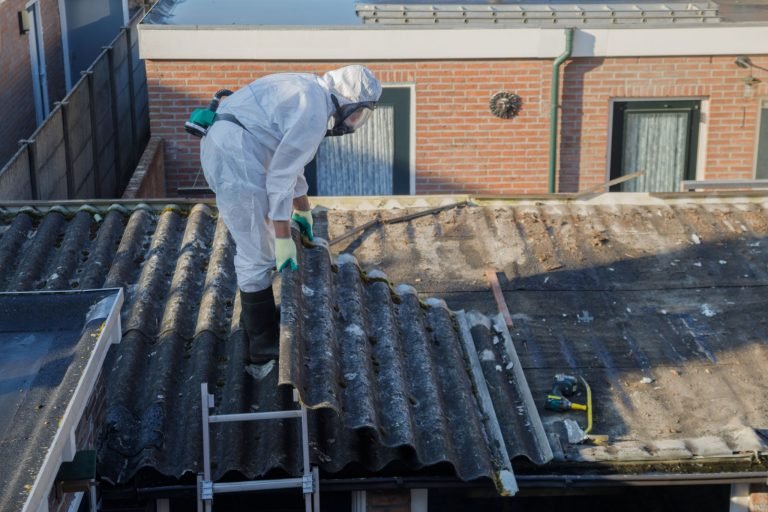
Asbestos is now recognized as a highly hazardous substance once a common material in construction and product manufacturing.
It was widely used for decades for its insulating and heat-resistant qualities until researchers found a link between the mineral’s microscopic fibers and severe health risks.
Namely, when inhaled, asbestos microfibrils cause damage to the lung tissues and abdominal lining, which can result in malignancy and different types of cancer.
Canada imposed a limited ban on asbestos in the 1980s and a full ban in 2018, so many residential and business buildings still contain this dangerous material.
To make sure that your home is safe, it is best to have it tested and hire an asbestos abatement professional in Toronto. This material is highly hazardous and needs to be handled by trained specialists.
Certified inspectors will test your Toronto home for asbestos, and if its presence is detected, they will recommend an asbestos removal company to perform the abatement.
Table of Contents
The Risk Behind DIY Asbestos Removal
Although a DIY removal may seem like a good way to save money, keep in mind that its dangers surpass the potential profit.
Identifying asbestos-containing materials (ACMs) and their removal require specific knowledge and training. The average Toronto homeowner is usually not equipped for this task.
If the contaminated area is large and contains friable ACMs, the abatement will require professional tools and high-level protective gear.
Improper DIY removal makes the matters worse more often than it does good and usually results in the contamination of the entire home.
Considering the effects of asbestos exposure, it is best not to gamble with the health and make sure that the abatement is done safely and thoroughly.
Hiring a professional Toronto asbestos abatement company ensures that the process is done in accordance with strict safety measures, minimizing the threat of exposure.
3 Levels of Asbestos Removal

Depending on the level of contamination, there are three basic types of asbestos removal – low-risk, medium-risk, and high-risk removal.
The type of removal depends on the size of the abatement area and whether the ACMs are non-friable or friable.
Non-friable ACMs are less dangerous for handling, so their removal falls into the low-risk category, as well as the abatement areas under 10 square feet. This type of abatement requires minimum protection.
Medium-risk operation includes removing non-friable and small amounts of friable ACMs in an area that has between 11 and 100 square feet and requires wearing full protection.
Large areas with a high amount of friable ACMs are considered high-risk operations, requiring special removal techniques and high-level safety equipment.
What Happens During Asbestos Abatement
Asbestos abatement tactic is developed according to the preliminary inspection and test results, which indicate the scale of contamination.
The removal method will somewhat differ depending on the level of risk, but all abatement activities include:
- Following adequate safety precautions and wearing safety equipment (respiratory mask, gloves, disposable overalls, etc.)
- Isolation of the abatement area and installing filters outside – this is done to prevent the spread of microfibrils.
- Marking the abatement zone with danger signs
- Removing ACMs according to the adequate procedure
- All removed ACMs are placed in thick plastic bags and tightly sealed
What Happens After Asbestos Removal is Complete
Once the ACMs are removed, the next step is to clean the entire area thoroughly.
Cleanup after asbestos abatement includes swiping the whole room with wet mops to prevent the remaining dust from becoming airborne and vacuuming with a HEPA vacuum.
Using regular vacuums will spread the microfibrils everywhere instead of removing them from the area.
Just like the removed ACMs, all safety equipment used during the abatement must be disposed of in thick plastic bags and sealed.
Once the cleanup is done, and all abatement waste is packed, the bags are taken to a specialized disposal unit, certified to handle hazardous waste.
To confirm that the asbestos abatement was performed successfully, it is advised to have your Toronto home tested.
If there are any remaining ACMs or microfibrils, you should ask for compensation and find a real professional.
If you are looking for trusted asbestos removal experts in Toronto, reach out to Inch by Inch Inspections.
Our certified staff is always ready to provide quality service and make your home asbestos-free.
Call us to schedule your asbestos abatement today.